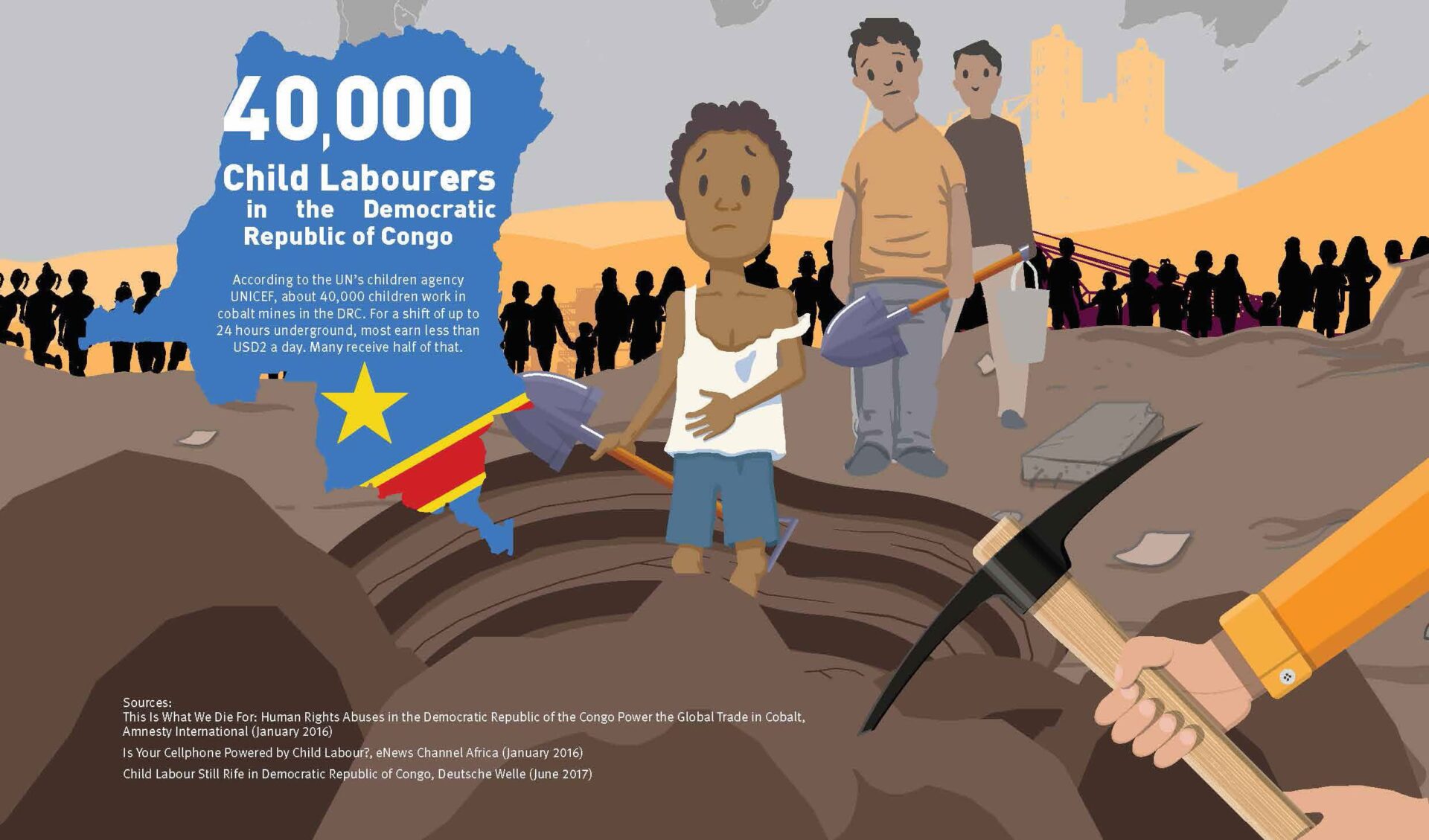Behind every new smartphone, we buy is a hidden market of illicit child labor,
toxic emissions, and mine-related illnesses and injury
The production of just one smartphone requires massive open mining operationsall over the world, all
of which contribute to severe landscape destruction, polluting water, and releasing CO2 emissions.
Cobalt, one of the key rare-earth metals in smartphone production has been wreaking havoc on
the communities of Southern Congo. With over half of the world’s cobalt produced there, the
mines of Congo are responsible for the majority of the world’s smartphones.

Source : https://www.asiangeo.com/environment/how-cobalt-goes-from-congo-to-the-world/
How Does My Smartphone Support Child Exploitation in Congo?
40,000 children, some as young as the age of six are exploited in Congo’s Cobalt
mines
The increased demand for smartphones in recent years is exasperating Congolese landscapes and citizens.
Over 250,000 workers rely on the mining of cobaltas their main source of income. However, the increased
demand has not resulted in a living wage for any of these workers. Most workers do not earn more than
$2-$3 a day, even while facing numerous safety risks, such as collapsing tunnels and respiratory
illness. Overall, the deregulated cobalt industry is negatively affecting the economy and destabilizing
communities. Apart from the human cost of smartphone production, each new phone purchased
contributes to habitat destruction, species endangerment, and on-site casualties.
Source : https://industryeurope.com/sectors/metals-mining/5-tech-giants-sued-over-use-of-child-labour/
Mining Cobalt for your Smartphone Kills Landscapes, Humans, and Gorillas
In 2019, 43 artisanal miners were killed in a cobalt mining-related landslide
In addition to ongoing health and incident-related casualties, Congo’s increased mining activity has been
resulting in landslides, deforestation, and excessive carbon dioxide and carbon monoxide emissions across
the country. Globally, smartphones created about 17.4 megatons of carbon dioxide in 2018—that’s the
equivalent of 37 million cars being driven for a year. Landslides and deforestation are placing even further
environmental stress on communities that are already struggling to survive. In addition, mining-related
deforestation has wiped out 80% of the Grauer Gorilla population, leaving less than 4,000 gorillas remaining
today. Despite these very real consequences, people all over the world continue to fall prey to marketing
campaigns convincing us that we need the newest smartphone technology. With so much reckless human,
animal, and environmental destruction, we must ask ourselves: is our burning need to constantly have the
newest model worth this level of exploitation?

Source : https://www.ibm.com/blogs/industries/industry-diamonds-nothing-cobalt/
Each new smartphone produced 80kg of CO2 emissions during
production alone
There is no doubt that smartphone technology has become an integral part of our daily life, with many
jobs making it compulsory to have one. We do not, however, need to buy whatever new phone is on the
market each year. Although many companies have implemented trade-in programs, these don’t
necessarily reduce the amount of rare-earth metals, such as cobalt, being mined every day in Congo.
If we can extend the life of our smartphone by even three years, we can save up to 240 kg of carbon
emissions, while also demanding more sustainable production practices. Smartphone users can also
consider supporting new brands that employ ethical and sustainable practices. The next time you
see an advertisement for the latest phone, remember the people and landscapes of Congo.

Source : https://lokoleyacongo.com/2020/09/10/to-end-mining-of-cobalt-by-congolese-children/



